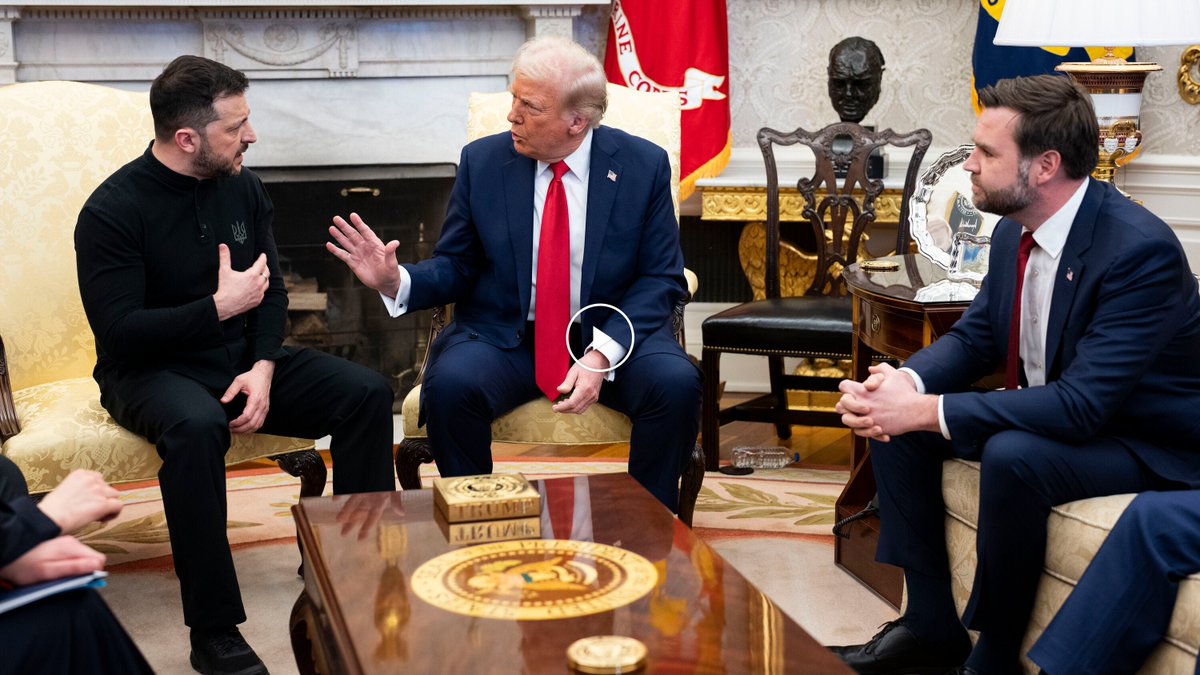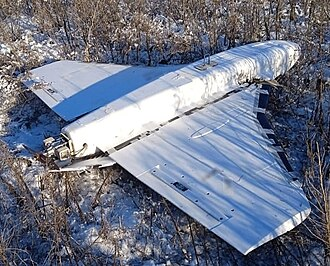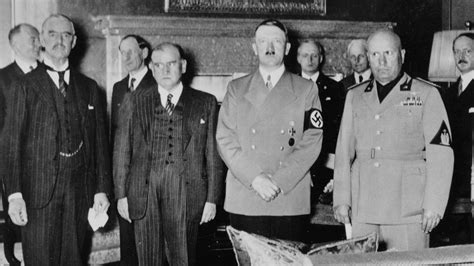1/ Dear all, many among you have asked me about my opinion on #oil, #logistics, #pipelines, price movements and a reality check on the #german #embargo plans. So I decided to make another explanatory thread. Grab a beer, this may take a while to read.
2/ It has often been said that oil is a global #commodity that travels on the seas. That view is not wrong, but incomplete. In fact, much oil is shipped by pipelines, on all continents. For an imcomplete but illustrative overview, see
en.wikipedia.org/wiki/List_of_o…
en.wikipedia.org/wiki/List_of_o…
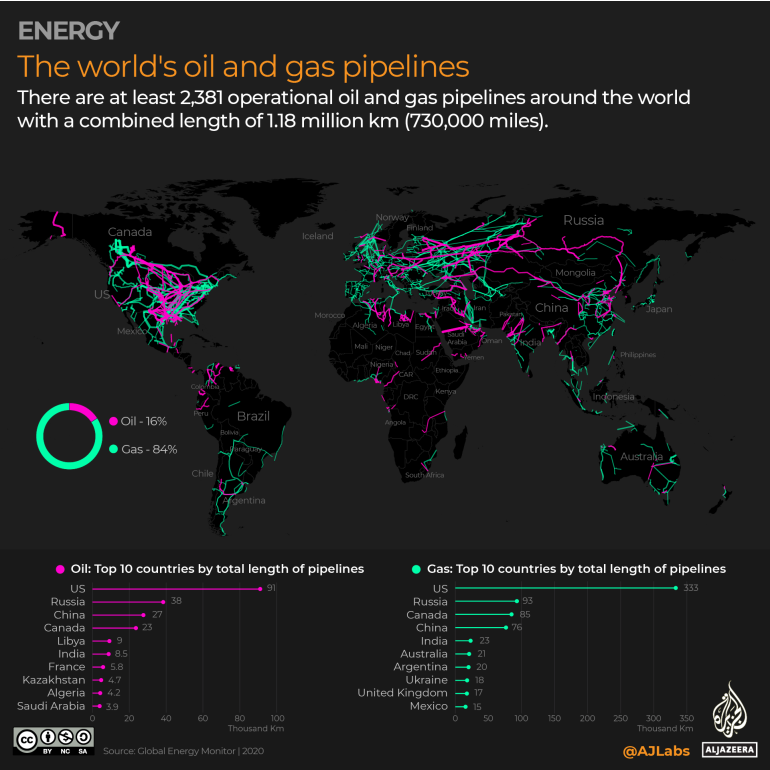
3/ Most pipelines either distribute incoming seaborne supplies to inland consumers (e.g., refineries), or they route domestically produced oil to seaports where it is loaded on #tankers.
4/ An example for the first category (distributor pipeline) is the #south #european pipeline. It channels oil imports by the #french ports of #fos and #lavéra to eastern #france and, by the #oléoduc du #jura, to #switzerland. 

5/ An example for the second category (conveyor pipeline) is the eastern #siberia - #pacific ocean (ESPO) pipeline which transports oil from the fields of eastern sibera to the russian far east coast, from where it is loaded onto tankers.
en.wikipedia.org/wiki/Eastern_S…
en.wikipedia.org/wiki/Eastern_S…

6/ But there is a third category – direct connectors. They feed oil supply from one country to another, either directly or by transiting other countries which may branch off quantities for their own consumption via a spur line. These lines are not seaborne, but they run overland.
7/ Why? Two reasons. First, 44 "landlocked" countries have no access to the #high #seas. For such countries, the cost of transporting #commodities to #ports its high. The largest landlocked country on earth is #kazakhstan which is also a major oil producer.
8/ Its oil production of 2 million barrels per day (mbpd) covers about 2% of the global daily production of roughly 100 mbpd. but kazakhstan is far away from the high seas, so it feeds its oil supplies directly to its major customers in #europe and #china.
9/ Second, economies of scale. Point-to-point overland routes avoid logistics, risks and costs of seaborne transit. When large customers are at the end of the line, it may be advantageous to ship oil directly. The #keystone pipeline between the #usa and #canada is an example. 

10/ the #druzhba (“friendship”) pipeline is an example for the latter type. Although neither #germany nor #russia are landlocked, the pipeline channels oil directly from western #siberia through #belarus and #poland to #germany.
11/ Despite the cold war, it was built by east-west cooperation. #west #german firms (#mannesmann, #thyssen) provided the pipes, and #eastern labor put them together. The pipeline runs both above and below ground. 

12/ consider the following simplified map of its structure. At the junction in #mozyr (#belarus), it splits in a southern branch which runs through #ukraine and on to #slovakia, and a northern branch which runs though #poland and on to #germany. 
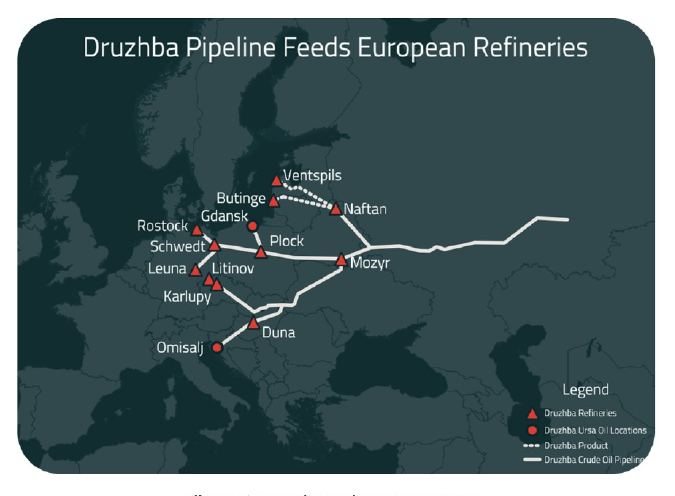
13/ the central exit node for #germany is the “PCK” #refinery in #schwedt, a small city right on the polish-german border. Most unfortunate for germany right now, it is controlled by #rosneft which also holds the majority of the shareholder #equity.
de.wikipedia.org/wiki/PCK-Raffi…
de.wikipedia.org/wiki/PCK-Raffi…
14/ the #usa had constantly opposed this unilateral dependency of westgermany on russian energy. Ever since the #reagan administration, u.s. presidents have advocated the “southern corridor”, by which oil and gas from #azerbaijan and #central #asia is shipped directly to europe.
16/ but german economic policy decided otherwise. It has been taking a strong pro-russian energy stance since the 2000s. Now, with the war giving pro-russian politicians a shock therapy, germany is looking for low cost alternatives while keeping the PCK refinery open.
17/ so what’s the plan for a german oil embargo against russia? Reconsider the druzhba map from tweet no. 12 and look at the junction in #Płock (pronounced poo-odd-sh-k). From there, a spur line runs to the large polish sea port of #gdansk.
18/ in principle, oil tankers could dock at gdansk and feed their supplies directly into that spur line. The oil would flow southbound to the junction and then westbound to germany. By teaming up with #poland, this transit could be organized.
19/ now what about the quantity of oil that is to be replaced? Germany crude oil consumption is about 2.2 mbpd, and roughly one fourth, hence 550 kpd, of that volume comes directly from russia by druzhba. 

20/ in addition, #rotterdam is the largest oil seaport in #europe. Most of russia’s seaborne oil exports to western europe dock there. the area has five refineries along the lower #waal river, and from it runs the rotterdam-rhine pipeline which feeds western germany. 

21/ so, the odd seaborne lot would have to be replaced too. so say 700 kpd must come in by seaborne imports. Practically speaking, each day, vessels with that capacity would dock at rotterdam, unload about 15%, sail on to gdansk, unload the rest there.
22/ now let’s ask the sailors how many vessels we would need for such a voyage. The most feasible solution seems to use two LR-1 carriers per day, each of which can bunker between 300k and 500k barrels per trip.
eia.gov/todayinenergy/…
eia.gov/todayinenergy/…
23/ For a visual example of an LR-1 vessel, consider e.g. the “Four Wind”. She is a mighty lady. My, she’s a beauty. We would see two of them every day. 

24/ But what about draft? True, the #baltic sea is shallow, but her draft is a mere 12.4 meters. Still, germany’s #nord-ostsee kanal has a maximum draft of 9.5 meters, so she would have to go around #denmark on her voyage to gdansk.
25/ So, in terms of volume, that replacement could probably be organized, if at much higher cost given the additional logistics and travel times. No wonder, therefore, that #brent was up 2% immediately after the news hit the market. 

• • •
Missing some Tweet in this thread? You can try to
force a refresh



